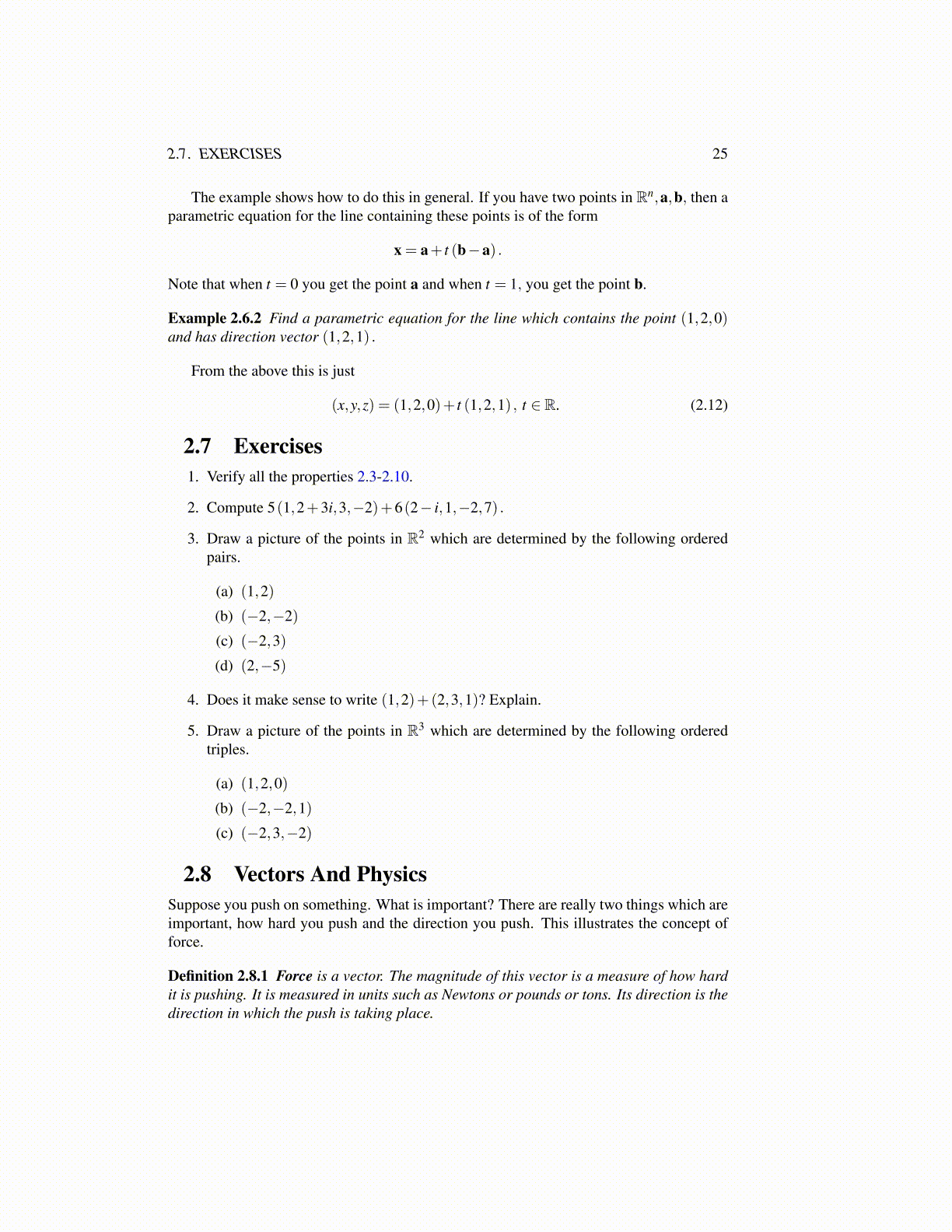
2.7. EXERCISES 25
The example shows how to do this in general. If you have two points in Rn,a,b, then aparametric equation for the line containing these points is of the form
x = a+ t (b−a) .
Note that when t = 0 you get the point a and when t = 1, you get the point b.
Example 2.6.2 Find a parametric equation for the line which contains the point (1,2,0)and has direction vector (1,2,1) .
From the above this is just
(x,y,z) = (1,2,0)+ t (1,2,1) , t ∈ R. (2.12)
2.7 Exercises1. Verify all the properties 2.3-2.10.
2. Compute 5(1,2+3i,3,−2)+6(2− i,1,−2,7) .
3. Draw a picture of the points in R2 which are determined by the following orderedpairs.
(a) (1,2)
(b) (−2,−2)
(c) (−2,3)
(d) (2,−5)
4. Does it make sense to write (1,2)+(2,3,1)? Explain.
5. Draw a picture of the points in R3 which are determined by the following orderedtriples.
(a) (1,2,0)
(b) (−2,−2,1)
(c) (−2,3,−2)
2.8 Vectors And PhysicsSuppose you push on something. What is important? There are really two things which areimportant, how hard you push and the direction you push. This illustrates the concept offorce.
Definition 2.8.1 Force is a vector. The magnitude of this vector is a measure of how hardit is pushing. It is measured in units such as Newtons or pounds or tons. Its direction is thedirection in which the push is taking place.